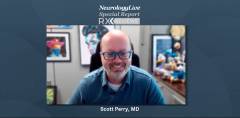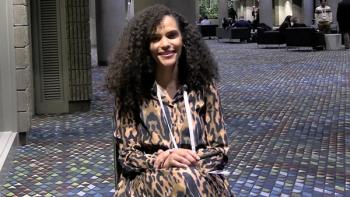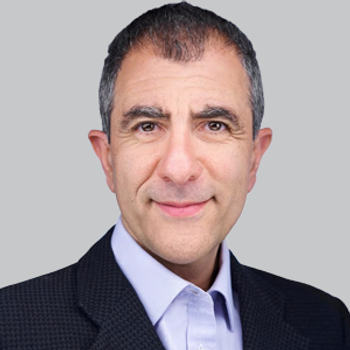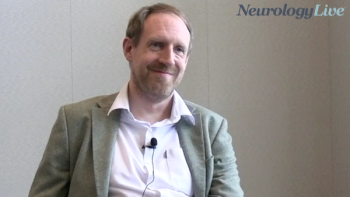
Functional and Developmental Outcomes on the Vineland-3 Scale
Epilepsy expert Joseph Sullivan, MD, detailed zorevunersen’s effects on adaptive behavior and communication skills, emphasizing improvements on the Vineland-3 scale that extend beyond seizure control. [WATCH TIME: 5 minutes]
Episodes in this series

In this two-part NeurologyLive® Special Report, epilepsy experts Scott Perry, MD, and Joseph Sullivan, MD, provide clinical insights into zorevunersen, an investigational antisense oligonucleotide therapy in development for Dravet syndrome. Across both discussions, they explore the rationale behind targeting the SCN1A gene, review emerging efficacy and safety data, and highlight how gene-directed approaches may complement or go beyond current anti-seizure medications.
In this latest installment, Sullivan, director of the Pediatric Epilepsy Center at UCSF, discussed the 36-month data presented at IEC 2025, including long-term seizure reduction, Vineland-3 outcomes, and safety observations from the open-label extension. He also breaks down the design of the ongoing phase 3 EMPEROR trial and reflects on how zorevunersen continues to demonstrate additive benefit, even in patients already receiving highly effective therapies.
In this episode, Sullivan explains why non-seizure outcomes are an important focus in Dravet syndrome and details how zorevunersen demonstrated measurable improvements across Vineland-3 domains. He highlights communication—both expressive and receptive language—as a particularly meaningful area of change for patients and families. The data suggest functional benefits that exceed expectations from natural history or seizure reduction alone.
Transcript edited for clarity.
Joseph Sullivan, MD: We’re really excited about the non-seizure outcomes from this study, because Dravet syndrome is so much more than just seizures. For decades, caregivers have told us that while new therapies have improved seizure control, we’ve barely scratched the surface on the other challenges—especially cognition, language, and behavior. Even with the progress we’ve made by 2025, there are still so many unmet needs in those areas.
Before the phase 1/2a studies even began, Stoke Therapeutics conducted a natural history study to better understand how these patients function over time while on standard-of-care therapies. That study incorporated several neurodevelopmental assessments, and the Vineland-3 ended up being one of the most informative. It’s not necessarily an easy assessment to do in a clinical trial, but it provides meaningful information about how a child is functioning day to day.
The Vineland-3 is a structured interview-based tool that looks at different aspects of adaptive behavior—essentially, how patients function in real-world contexts. It includes domains like communication, coping skills, socialization, and motor function. Although it’s not specifically validated in Dravet syndrome, it’s a well-established, reliable tool for assessing developmental progress.
Not every patient across the Monarch, Admiral, Swallowtail, and Longwing studies had both baseline and follow-up Vineland data, so what we presented reflects the subset of patients who did. For those followed through 36 months, we’re seeing improvements that clearly exceed what we would expect based on natural history alone.
What’s most encouraging are the changes we’re observing in the communication domains—both expressive and receptive. Caregivers often tell us that if their child could simply communicate more effectively, it would make a tremendous difference in quality of life, both for the child and the family. Better communication can reduce frustration and improve behavior because children are better able to express their wants and needs.
The data show some variability, as reflected by the wider error bars, but several patients demonstrated substantial gains across multiple domains. The most consistent and clinically meaningful changes were in expressive and receptive communication. When we compare these findings to the natural history cohort, the magnitude of improvement we’re seeing with zorevunersen stands out as something we haven’t observed before in this population.
Overall, these results point toward benefits beyond seizure control. Improvements in communication and adaptive behavior represent a shift in what we’re able to offer these patients. For families who have long hoped for progress in these areas, seeing data that support real functional improvements is incredibly meaningful.
Newsletter
Keep your finger on the pulse of neurology—subscribe to NeurologyLive for expert interviews, new data, and breakthrough treatment updates.

































